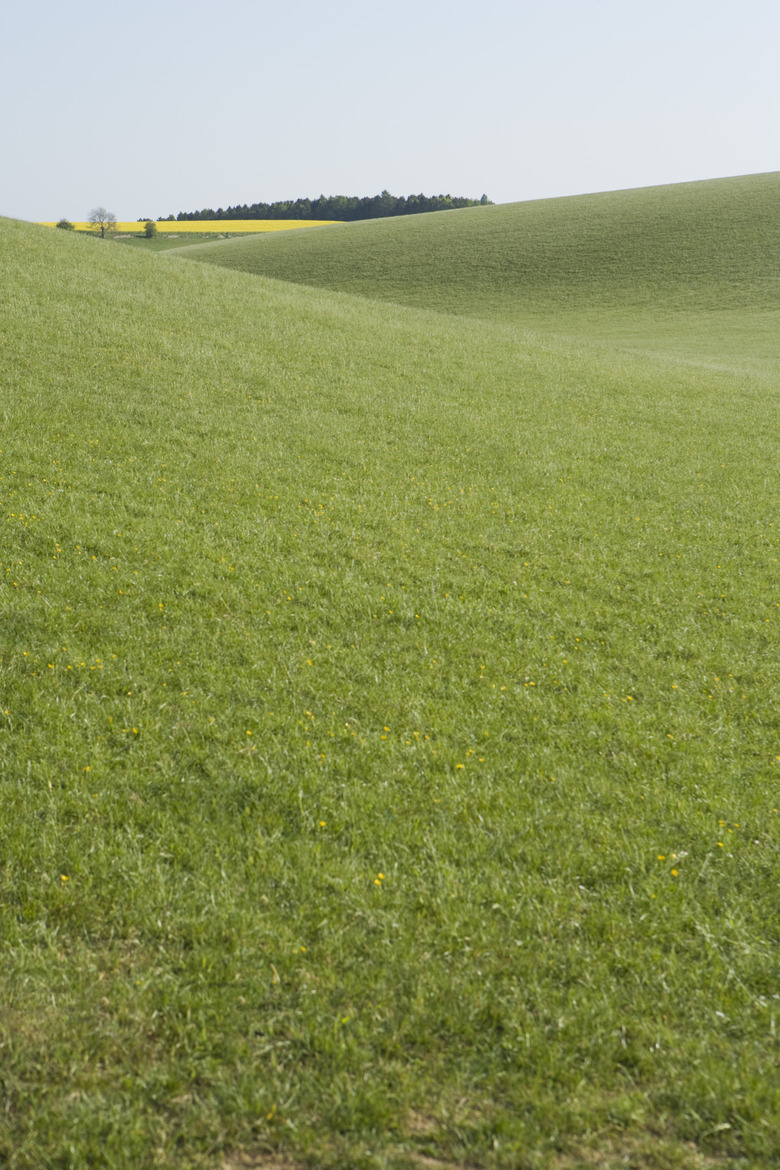Lawn Edging For Slopes
Lawn edging lends a clean-cut, crisp and tidy appearance to landscapes. It also helps to keep your grass from growing over into your garden beds or along the cracks in a pathway. With a sloping lawn however, edging can be trickier. Choose the type of material and technique that is best suited for meeting the challenges of your sloping lawn.
Concrete
Step 1
You can choose to use poured concrete or concrete paver stones for edging a sloped lawn. The heaviness of the concrete helps the edging stay in place, but it is an expensive lawn edging choice. If using poured concrete, you must be sure to anchor the edging forms well in place and leave them there until the concrete has fully set. This method is well-suited for those who need to mow their lawn all the way to the edging, as the flat concrete will not interfere with the lawn mower.
- Lawn edging lends a clean-cut, crisp and tidy appearance to landscapes.
- This method is well-suited for those who need to mow their lawn all the way to the edging, as the flat concrete will not interfere with the lawn mower.
Brick and Stone
Step 1
Like concrete, the weight of stone and brick pavers helps them stay in place on a sloped lawn. To install, dig a trench at least half the depth of the stone or brick pavers, which will help keep the pavers in place. Because of their varying sizes, stone and brick paving blocks can be adapted to a variety of shapes and edging requirements that often occur when edging a sloped lawn.
Terraces and Wood
Step 1
Placing small terraces, also known as baffles, onto a sloping lawn can help prevent soil erosion as well as wear and tear on grass. However, wood edging or landscape timber is needed to support the baffles, as well as to keep the soil and grass from spreading over onto the terraces. Bury the timbers half-way into the ground to keep them in place. As the wood will gradually decompose, you need to replace the landscape timber every few years.
- Like concrete, the weight of stone and brick pavers helps them stay in place on a sloped lawn.
- However, wood edging or landscape timber is needed to support the baffles, as well as to keep the soil and grass from spreading over onto the terraces.
Trench
Step 1
More labor- and time-intensive than other options, you can also have a hand-cut edge for your sloped lawn. Create a small, neat trench with an electric edger for a tidy, clean-cut edge between your sloped lawn and other parts of your backyard. This option, while less decorative than others, also means fewer materials to clean, purchase and maintain over time.
